| HOME |
|---|
LEO
The Lion
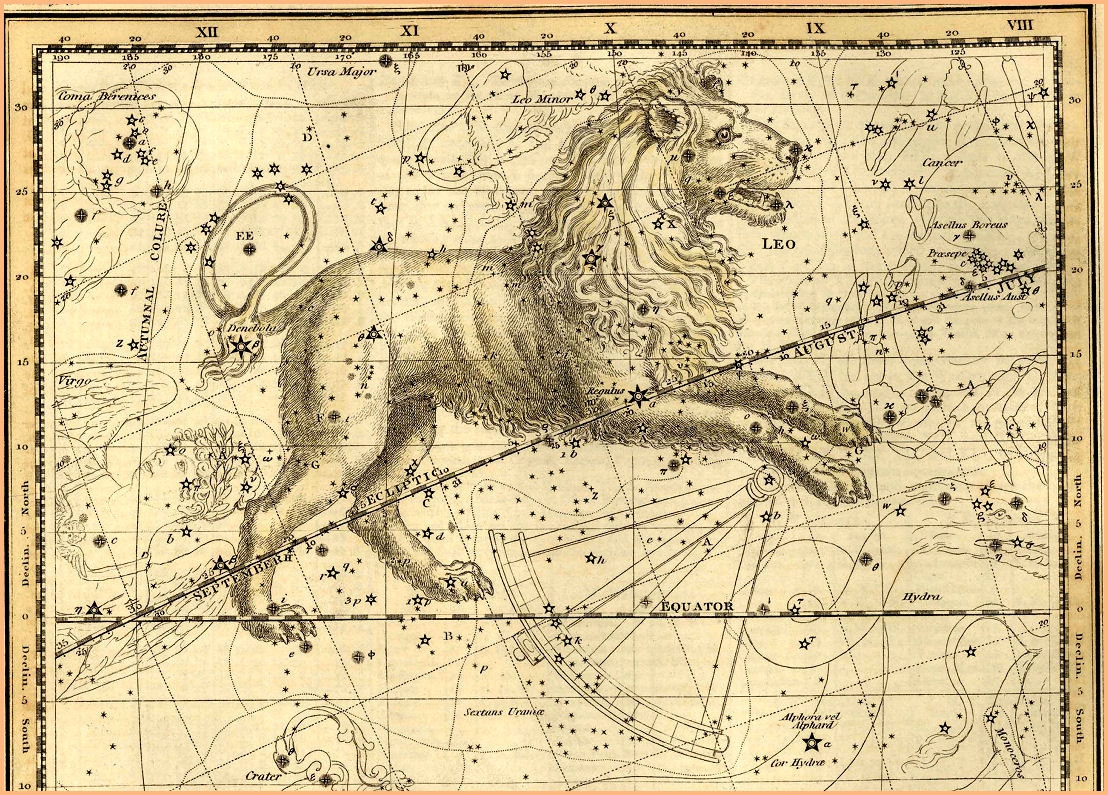
Leo - Celestial Atlas by Alexander Jamieson - 1822
| HOME |
|---|

The figure of a lion was put into the heavens to commemorate the first of the great labours of Hercules: the killing of the monstrous, man-eating lion of Nemaea. According to legend, Hercules broke all his weapons trying to kill the lion, and finally had to resort to strangling the beast with his bare hands. Such a feat certainly earned recognition, and it is said that Hercules proudly wore the skin of the lion for the rest of his days.
Leo is easily identified by the familiar asterism known as the Sickle of Leo, that looks like a backwards question mark, and depicts the head and mane of the lion. The body of the lion extends back, prone and sphinx-like, with a large triangle of stars depicting the rear of the lion. It is thought the great sphinx of Gizeh was fashioned after the form of Leo.
Just as its mortal namesake is historically known as king of the beasts, the constellation Leo has been associated with kings and royalty throughout antiquity.
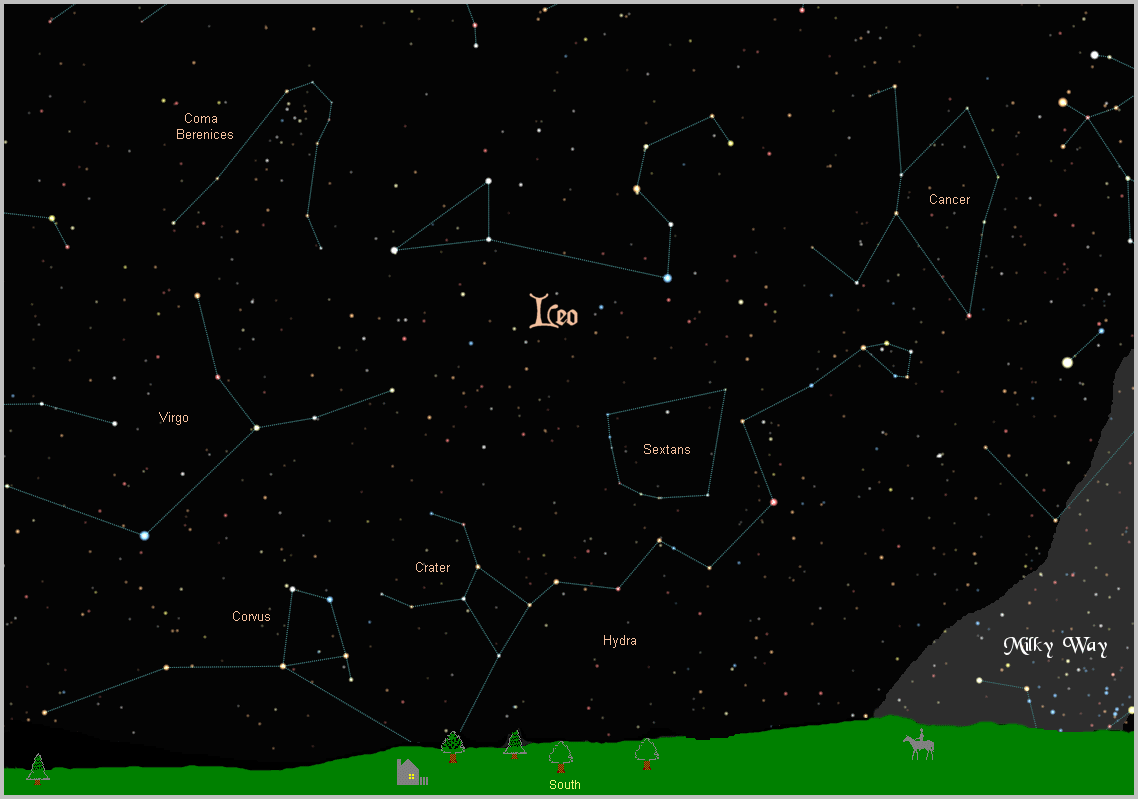
With a magnitude of 1.25, the brightest star in the constellation, Alpha Leonis, was named Regulus (Latin for little king), by the great Polish astronomer Copernicus. The star is also known as Cor Leonis, heart of the lion. The ancients regarded it as one of the four "Royal Stars" of Heaven (the other three being Aldebaran, Fomalhaut, and Antares). Regulus is a four star system, dominated by a B8IV blue/white subdwarf, three times the size of our Sun and 150 times brighter. It has one dwarf companion in a very close orbit, and a binary pair of two more dwarfs in a very distant orbit of about 10 billion miles (9.7 AU). The entire Regulus quadruple star system is about 80 light years away.
With a magnitude of 2.14, the second brightest star in the constellation, Beta Leonis, is named Denebola, the tail of the lion. It is an A3V white main sequence star, and it is one of the closer stars to Earth at a distance of 43 light years.
Gamma Leonis is called Algieba, which is thought to come from the Latin "Juba" for mane. Upon close examination it can be seen as a binary, or double star system, with two giant stars in orbit around each other. The slightly brighter star (Gamma1 Leonis) is a G7III yellow giant, and Gamma2 Leonis is a K3III orange giant. Both stars shine together with a magnitude of 2.61, making Algieba the brightest star in the curve of the sickle. At a distance of 125 light years, Algieba sits at the radiant from which the famous Leonid Meteors appear to originate.
In January, 2011, a huge planet eight times the size of Jupiter was discovered in orbit around Gamma1 Leonis. A planetary system around a bright second magnitude star is always exciting, even if it is only one gas giant. Gas giants may have habitable moons, and it is always possible there are smaller, more Earth-like planets orbiting this star as well that are harder to detect.

Delta Leonis is named Zozma, from the Latin for girdle. It is a A5IV white subdwarf, and shines at a magnitude of 2.56. Like Denebola, it is relatively close at a distance of 58 light years.
Next in the Greek letter line-up is Epsilon Leonis, bearing the name Ras Elased Australis, an Arabic/Latin invention that tells us this is the southern star of the lion's head. The star is also known as Algenubi, Arabic for the southern one. It is a G1II yellow bright giant, shining at a magnitude of 2.98, about 250 light years away.
Zeta Leonis is Adhafera, Arabic for the lock of hair. It is a F0III yellow/white giant, shining at magnitude 3.42, about 275 light years away.
Of the nine stars that make up the figure of Leo, Eta Leonis is the only one without a name. It is worth noting however, because it is an extraordinary star. Residing far, far away at a distance of about 2,000 light years, where most other stars would be invisible, this star still manages to shine in our sky at a magnitude of 3.52, because it is so big. It is an A0I white supergiant, with a radius 30 times that of our Sun, and about 6,000 times brighter. If it was the same distance as Sirius (the brightest star in the sky, only 9 light years away), Eta Leonis would be 50 times brighter than Sirius, and would be visible during the day.
Theta Leonis is known as Chort, also "Coxa and Chertan", all referring to hip. It is an A2IV white subdwarf, with a magnitude of 3.34, about 90 light years away.
At magnitude 3.88, the last and dimmest of the nine stars marking the form of the lion is Mu Leonis, with the name Ras Elased Borealis, the northern star of the lion's head, also shortened to Rasalas. It is a K2III orange giant, about 133 light years away, and it has a planet. The planet is 2.4 times the size of Jupiter, in an orbit about the same size as Earth's orbit. Along with nearby Algieba, it marks the second naked eye star in Leo with a confirmed planet.
Kappa Leonis is named Al Minliar Al Asad, Arabic for the nose of the lion. Not part of the classic figure, it was named by famed Islamic astronomer Ulugh Beg in the fifteenth century. It is a K2III orange giant with a magnitude of 4.47, about 200 light years away.
Lambda Leonis has the name of Alterf, and is also not part of the classic figure. According to R.H. Allen the star carries the name of the ancient Arabic Lunar Mansion that once occupied that part of the sky. It is another K4III orange giant, with a magnitude of 4.32, about 330 light years away.
The third named star that is not part of the classic figure is Omicron Leonis, named Subra. Although the name has been referenced to the lion's mane, the star is found in the front leg. It is a binary system, with an F9III yellow giant, and an A5V white main sequence star, orbiting each other so closely they cannot be resolved telescopically. From a distance of 130 light years, they shine with a magnitude of 3.52.
Wolf 359 is the fifth closest star to Earth, only 7.78 light years away. Discounting brown dwarfs (mostly-dead stars), Wolf 359 moves up to third closest star, with only Alpha Centauri and Barnard's Star closer. Wolf 359 is a small M6V red main sequence star with a very dim magnitude of 13.4. Less than one tenth the mass of our Sun, it is just barely big enough to sustain hydrogen fusion. Its proximity to Earth has made Wolf 359 the "star" of many works of fiction, including several episodes of Star Trek.
In the constellation Leo no less than 22 stars have been found to support planetary systems, with two of those stars easily visible with the naked eye - Algieba, and Ras Elased Borealis, as discussed above. To be able to look up at two bright stars so close together with confirmed planetary systems is a rare treat indeed, and Leo is one of the few constellations where this is offered. Both stars are well over a hundred light years away however, and so far only gas giant planets have been found.
There is one star beyond visual range that hosts a smaller, "super earth" about 7.5 times the size of our planet. The bad news is the planet orbits a mere 7 million miles from the star, pretty much precluding the existence of life. The star is HD 97658, a K1V yellow/orange main sequence star with a magnitude of 7.76. It is still a good distance away however, at 68.8 light years.
The closest planet hosting star in Leo is Gliese 436, an M3V red main sequence star only 33 light years away. Despite its proximity the star is well beyond visual range at magnitude 10.6, with a low surface temperature of 3,684 degrees K. There is one confirmed Neptune sized planet in a dangerously close orbit, and indications of three more planets awaiting confirmation.
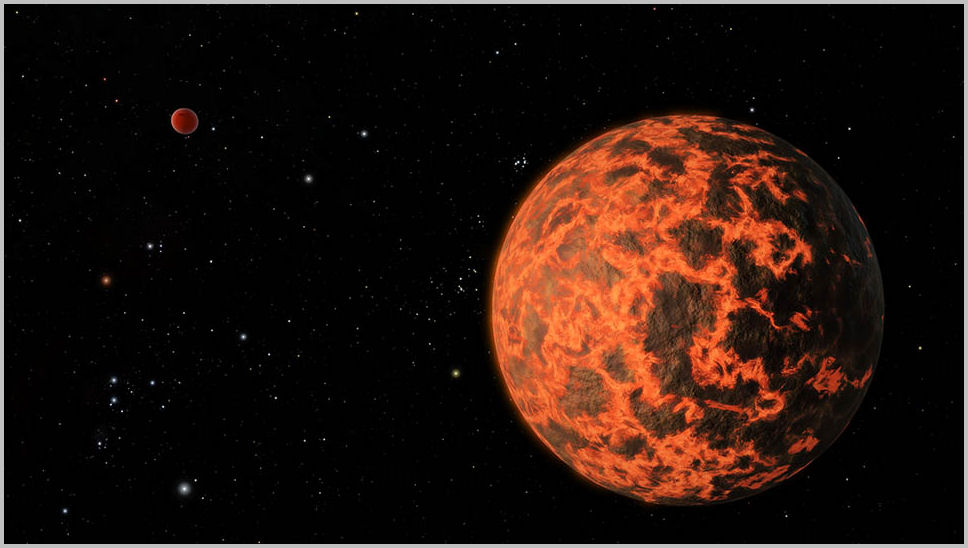
The other 18 planet hosting stars in Leo are all far away, beyond naked eye visibility, with gas giant planets. For more information on these and other extrasolar planets, visit NASA's New Worlds Atlas, and The Open Exoplanets Catalogue.
Like its next door neighbour, Virgo, Leo is full of galaxies, five of which are bright enough to qualify as Messier objects, readily accessible with small telescopes, starting with the Leo Triplet, or the M66 Group. In the image below, M65 is in the upper right, M66 in the lower right, and NGC 3628 in the lower left.
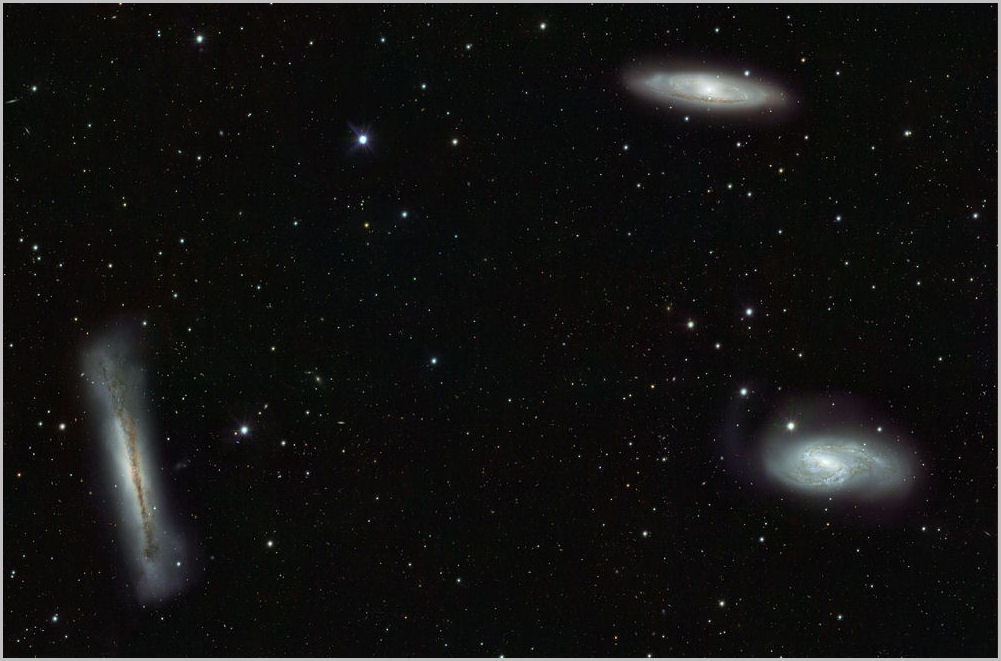
At a distance of 35 million light years, spiral galaxy M65 shines with a magnitude 9.3.
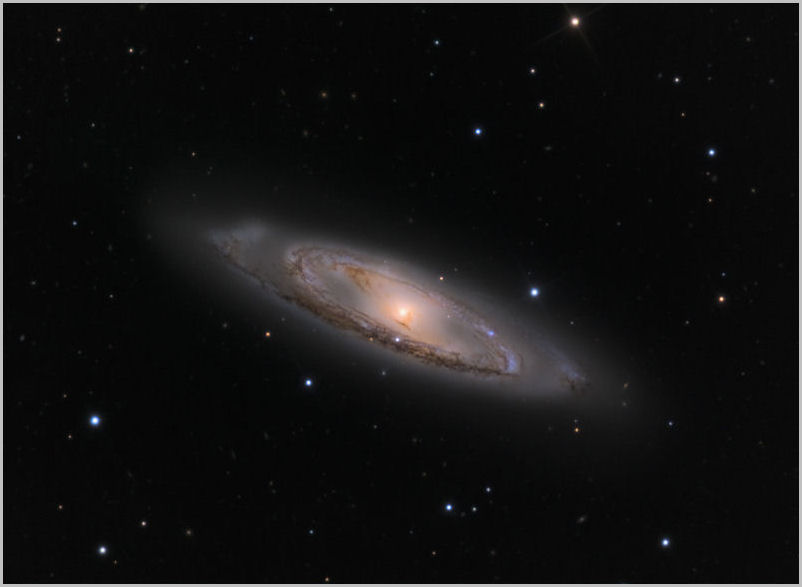
Bigger and brighter at magnitude 8.9 is spiral galaxy M66, also 35 million light years away.
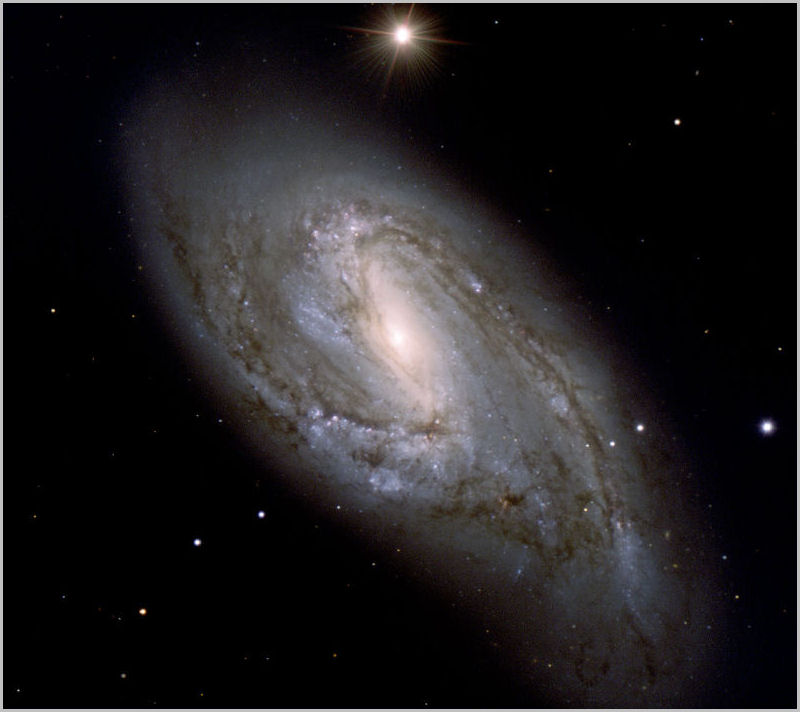
At the same distance, but with a slightly dimmer magnitude of 9.5, spiral galaxy NGC 3628 was missed by Messier with his primitive four inch refractor telescope, but easily seen with modern scopes of six inches or more.
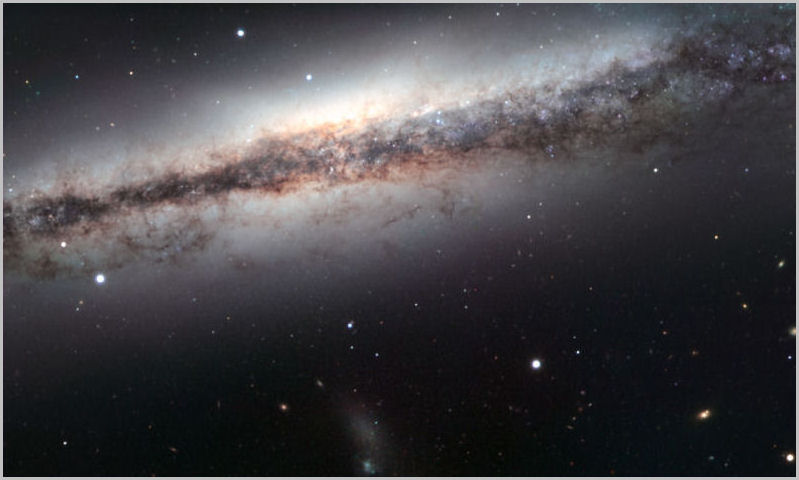
Another group of galaxies containing three more Messier objects (M95, M96, and M105) as well as an unspecified number of fainter galaxies is the M96 Group. In the image below, M95 is the face-on spiral on the left, and M96 is the slightly inclined spiral on the right.
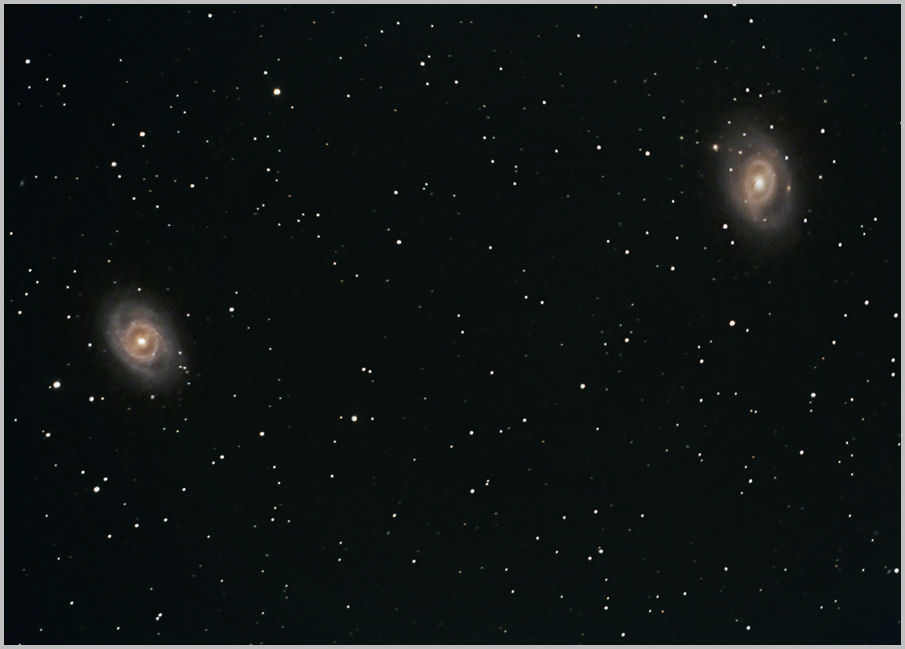
Keeping at a distance of 35 million light years is the barred spiral galaxy M95. With a magnitude of 9.7, it is about 75,000 light years across, slightly smaller than our Milky Way.
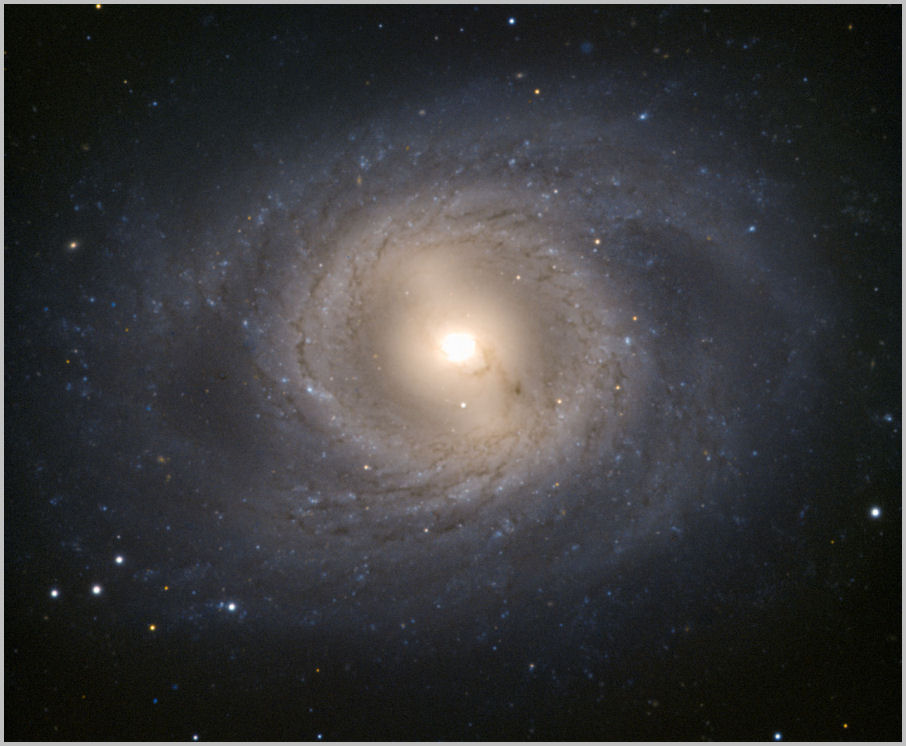
Very close by is spiral galaxy M96. At magnitude 9.3 it is the brightest of the M96 group, spanning 100,000 light years, about the same size as our Milky way.
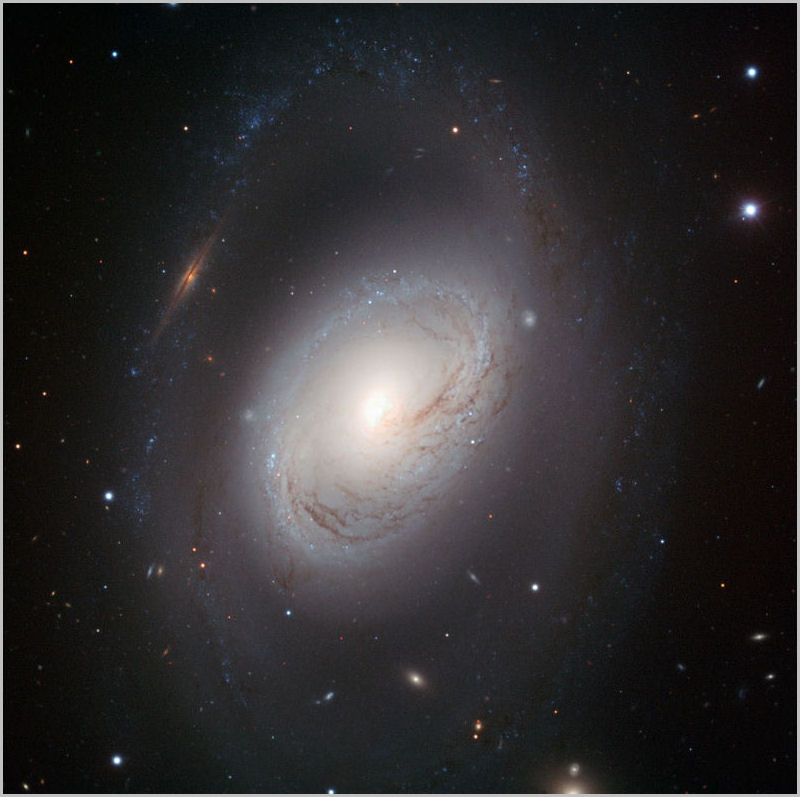
Also part of the M96 Group is M105 with a magnitude of 9.3. It is a bright lenticular galaxy, and as such shows very little detail.
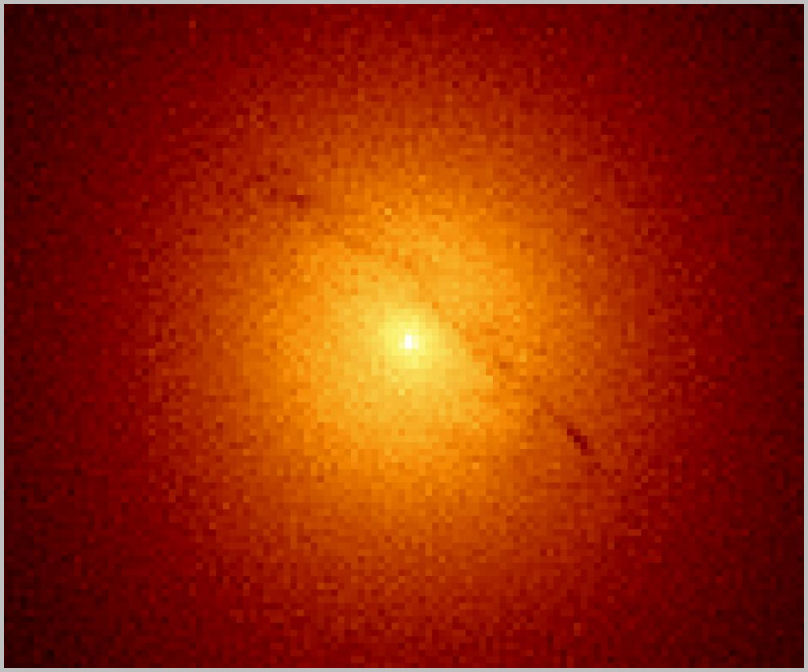
Down below the lion sits the bright finely detailed spiral galaxy NGC 3521, with a magnitude of 9.0, about 35 million light years away.
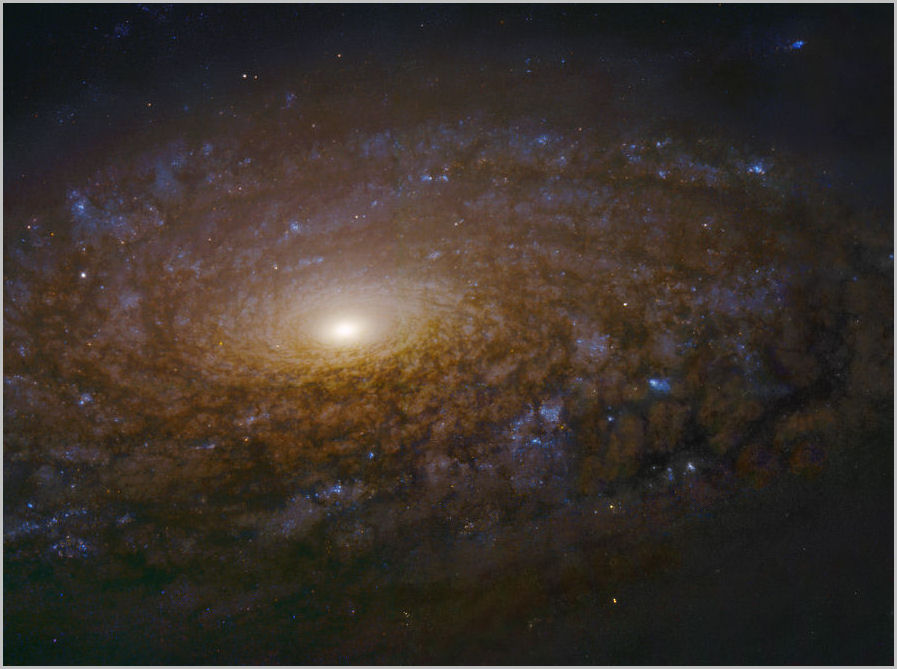
Up by the head of the lion is the bright spiral galaxy NGC 2903. With a magnitude of 9.0, it is one of the brighter galaxies in the sky, and relatively easy to find in a small telescope. It is also oriented almost face-on, exposing a great deal of detail in its spiral arms. It is close, as galaxies go, only 20 million light years away.
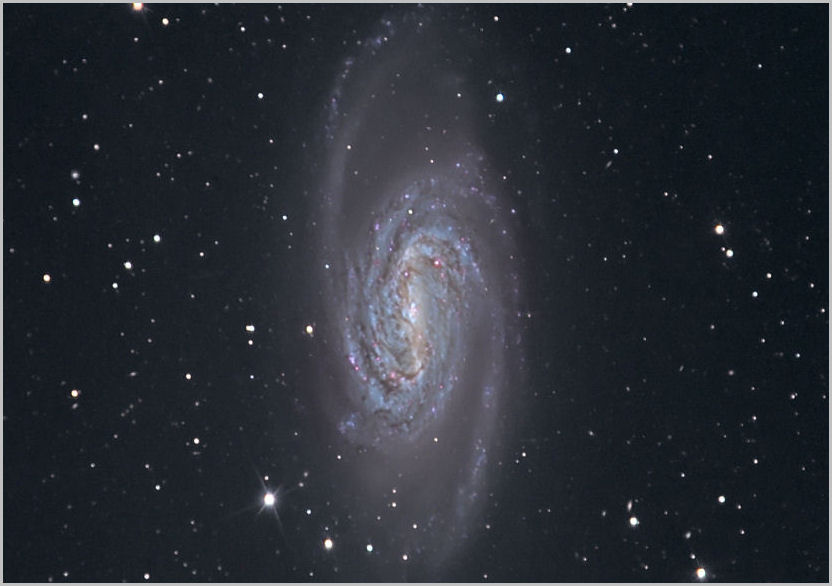
|
|
|
|
|
|